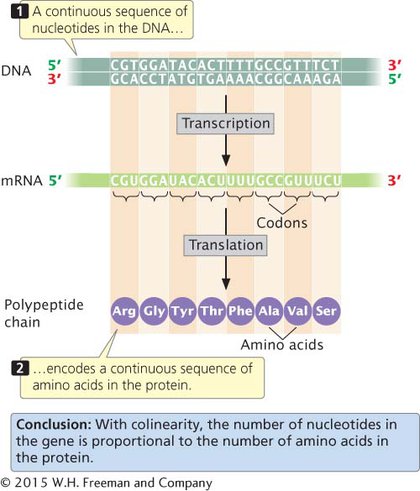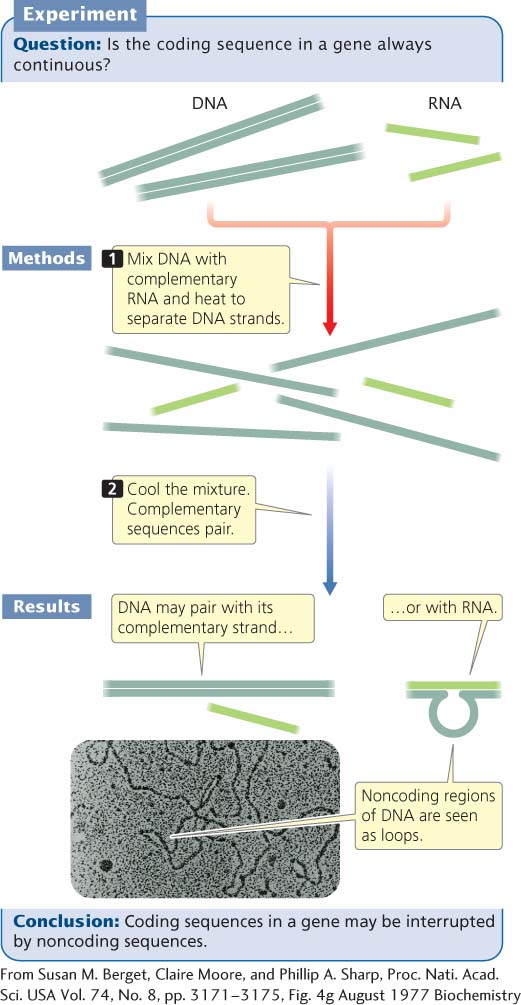Gene Organization
Early work on gene structure was carried out largely through the examination of mutations in bacteria and viruses. This research led Francis Crick in 1958 to propose that genes and proteins are colinear—that there is a direct correspondence between the nucleotide sequence of DNA and the amino acid sequence of a protein (Figure 10.14). The concept of colinearity suggests that the number of nucleotides in a gene should be proportional to the number of amino acids in the protein encoded by that gene. In a general sense, this concept is true for genes found in bacterial cells and in many viruses, although those genes are slightly longer than would be expected if colinearity were strictly applied because the mRNAs encoded by the genes contain sequences at their ends that do not specify amino acids. At first, eukaryotic genes and proteins were also assumed to be colinear, but there were hints that eukaryotic gene structure is fundamentally different. Eukaryotic cells were found to contain far more DNA than is required to encode proteins. Furthermore, many large RNA molecules observed in the nucleus were absent from the cytoplasm, suggesting that nuclear RNAs undergo some type of change before they are exported to the cytoplasm.

Most geneticists were nevertheless surprised by the announcement in the 1970s that not all genes are continuous. Researchers observed four coding sequences in a gene from a eukaryotic virus that were interrupted by nucleotides that did not specify amino acids. This discovery was made when the viral DNA was hybridized (paired) with the mRNA transcribed from it and the hybridized structure was examined using an electron microscope (Figure 10.15). The DNA was clearly much longer than the mRNA because regions of DNA looped out from the hybridized molecules. These regions of DNA contained nucleotide sequences that were absent from the coding nucleotides in the mRNA. Many other examples of interrupted genes were subsequently discovered; it quickly became apparent that most eukaryotic genes consist of stretches of coding and noncoding nucleotides.

CONCEPTS
When a continuous sequence of nucleotides in DNA encodes a continuous sequence of amino acids in a protein, the two are said to be colinear. In eukaryotes, not all genes are colinear with the proteins that they encode.
 CONCEPT CHECK 4
CONCEPT CHECK 4
What evidence indicated that eukaryotic genes are not colinear with their proteins?
When DNA was hybridized to the mRNA transcribed from it, regions of DNA that did not correspond to RNA looped out.